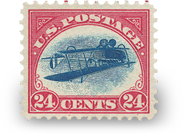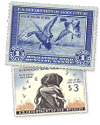| Introduction | Why Grade Stamps? | What is Grading? | PSE Grading System | Soundness | Centering | Combining Soundness and Centering | Eye Appeal | Gum Condition | Appendix |
An In-Depth Discussion of Stamp Faults
Some of the more perplexing, and sometimes contentious, issues faced in the expertizing and grading of U.S. stamps involve "production faults" which were present at the time of issue. These include the following.
- Natural gum skips or short gumming on never hinged stamps
- Natural gum bends, creases or wrinkles
- Natural paper inclusions
- Natural paper folds
- Natural straight edges
- Perforation disc indent thins
- Natural paper transparencies
- Blind perforations
- Guidelines on perforated stamps
- Scissor blunted perforations on Scott No. 167-177 stamps
All of these production faults were present at the time the stamp was first sold. They are not like paper tears, creases, thins, stains, reperforations or repairs which have occurred during the lifetime of a stamp but, like these other faults, they generally lower the value of a stamp and hence affect its grade.
We will discuss each of the ten listed "production faults" in turn. Some will object to calling them faults. For example, one could ask, "How can a natural straight edge be a fault? That is the way the stamp was made and sold." We don't want to get involved in fault semantics, but it is widely appreciated that a natural straight edge lowers the value of a stamp. Otherwise why have so many straight edged stamps been fraudulently perforated? If a government perforated stamp has later had perforations trimmed off on one side everyone would agree that such has created a fault and would lower the value of the stamp. Whether we call presale problems "faults" or something else, the bottom line effect is the same.
Natural Gum Skips
The gum on U.S. stamps was not always applied with perfect uniformity. It is not extremely uncommon to find unused, original gum, never hinged stamps, particularly pre-1925 issues, which have one or several tiny spots, less than 1mm in size, where there is no gum. On some issues such as the Graf Zeppelin air mail issues, Scott Nos. C13-C15, or the first duck stamps, Scott Nos. RW1-RW12, gum skips are rather common and can be more numerous or larger.
At PSE, we have had never hinged RW1 duck stamps which had several such skips and, in addition, a vertical gum skip line about 1mm wide running all the way up the center of the stamp. As another example one might encounter a never hinged Washington-Franklin stamp that came from the top row of a sheet where the gum did not get applied all the way up to the top edge of the top row stamps. This stamp could have 1 or 2mm of missing gum all along the top edge.
Anyone who says that the gum skips on an RW1 stamp or the short gumming on the Washington-Franklin stamp don't matter must be a person who is trying to sell the items. Simply put, in today's never hinged mania, it does matter if the gum skips become distracting. One or two or even three teeny 0.5mm specks can be accepted, but make it a whole bunch of small specks or one big skip and it matters.
For example, consider a superbly centered Washington-Franklin stamp that is fully gummed but has a faint, brushed out gum disturbance from a previous hinge behind the upper left corner. Suppose this area is 1 mm high by 3mm wide at the top left edge. This stamp is now previously hinged and has a value far less than if it were never hinged. Can anyone say that the same stamp with a 1mm high short gumming all the way across the top of the stamp is worth the full never hinged price?
Certainly fair-minded individuals can differ on what a proper policy should be. At present it is PSE's policy to mention gum skips in written expert opinions or to lower the stamp's soundness grade on never hinged stamps if we think that the stamp's value is significantly affected.
Natural Gum Bends, Creases or Wrinkles
On flat plate printed U.S. stamps the gumming process sometimes caused gum bends, creases or wrinkles. Gum bends, creases and wrinkles are all in the same family being commonly used terms for increasingly severe distortions of the gum and paper.
A gum bend is just that, the paper and gum have a troughlike bend, usually in a diagonal rather than a vertical or horizontal direction. When the stamp is immersed in lighter or watermark fluid there will be no dark line along the length of the bend and there may or may not be a slight white flashing as the fluid dries more quickly along the bend. While collectors prefer stamps without gum bends, if there is only one and it is minor the value will not be significantly affected. PSE calls gum bends only if there are two or more or if the one is at the borderline between a bend and a crease.
A gum crease will dip as a dark line in the fluid and will flash white as the fluid dries. Such occurs because the paper fibers become creased which can be seen on the front of the stamp. A gum crease can exist on any flat plate stamp, but certain issues are more prone than others, including Scott Nos. C13-C15 and RW1-RW12. If a gum crease dips dark and flashes over a significant length PSE will call it and will lower the stamp's soundness grade. This is especially so if there are multiple gum creases which sometimes occur. Like gum bends, gum creases often occur in diagonal directions.
Gum wrinkles are in the same family, but they are slightly different than gum bends or creases. A gum wrinkle can occur anywhere on a stamp, can be of any length and commonly does not extend in a straight line. If one is severe enough to mention on a certificate it will also dip as a dark line and flash white as the fluid dries. Like its close relative the gum crease, a significant gum wrinkle will affect the paper and can be seen on the front of the stamp.
Natural Paper Inclusions
U.S. stamps occasionally have one or more natural inclusion specks embedded in the paper. These vary in size, color and location. They effectively lower the value of a stamp if they are visually objectionable and so the color of the stamp can also be a factor affecting the visual effect.
The worst situation is that of a 1mm or larger black inclusion showing on the front side of the paper, on a light colored (say yellow) stamp, and in a location which is fully visible (in a margin or a part of the design that has no ink). Change to a black colored stamp with the inclusion in an inked portion of the design, or change the location to the back side of the paper so that it is not visible from the front, or change to a light colored inclusion and to a tiny size and the inclusion is no longer objectionable.
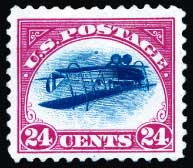
It is a judgement call whether PSE will mention a natural paper inclusion on a certificate of authentication or will downgrade the soundness of a stamp if it is to be graded.
As for natural paper inclusions, one of PSE's most important situations involved an inverted Jenny, Scott No. C3a. Purchased in an Eastern auction it was submitted to PSE along with two very old PF certificates, neither of which mentioned a prominently visible natural paper inclusion smack in the middle of white space in the center of the stamp. The inclusion was not mentioned in the auction description although it had been mentioned in the previous two auction descriptions where the stamp was sold. After considerable discussion PSE decided to mention the natural paper inclusion on its certificate and, apparently, the purchaser returned the stamp based on this mention, notwithstanding that the auction catalog color photograph clearly showed the inclusion.
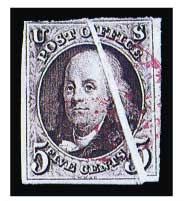
Natural Paper Folds
Some of the very early U.S. stamps were printed on paper sheets that had tiny pre-printing crimped paper folds. Years after printing and use these crimped folds could be pulled apart thus leaving a strip up to perhaps 1 or 2mm wide which would have no printing ink. These folds can run in any direction on any early stamp, but we have seen more examples on Scott No. 1 than on any other issue. Typically these folds are inclined vertically. They are not common and while they necessarily incorporate paper creases, they are collected by a very small group of specialists. No such stamp has ever been submitted to PSE for grading and so no PSE policy exists regarding how we would assess soundness.
Plain certificates of authenticity for the few such stamps that have been submitted for expertization simply have mentioned the paper fold.
Natural Straight Edges
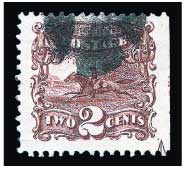
Starting with Scott No. 18 in 1857 and continuing up through Scott No. 856 in 1939 almost all of the U.S. perforated sheet stamps which were printed on flat plate presses were issued in panes which contained one or two non-perforated, natural straight edges. There were a few exceptions, notably Scott Nos. 118-122, 523, 524, 547, 573, 620, 621, C13-C15, C18, several of the Official stamps, and some of the Reissues and Special Printings that were issued beginning in 1875.
Collectors generally frown on straight edged stamps so they are relatively uncommon today, most surviving examples having had fake perforations applied to make them more saleable to unsuspecting collectors.
It is easy to identify sheet stamps with natural straight edges and such can be mentioned on a certificate of authenticity, but the question remained how PSE should account for such stamps in its grading system. Today our system calls for pre-1890 stamps to be assigned a soundness fault grade equivalent to that of a light crease, small thin, tiny tear, or reperforated on one side whereas post-1890 stamps are assigned an equivalent to that of a more significant crease, thin or tear. This is admittedly a rather approximate analysis and it too severely punishes jumbo, straddle margin, pre-1890 stamps, but in most instances it leads to a final stamp grade reasonably in touch with the SMQ listed retail value.
Perforation Disc Indent Thins
A perforation disc indent occurred when a perforation disc got impressed into the back or front of a stamp. Where this has occurred it often has been impressed so heavily that it thins the paper over the entire circular area of the disc although the disc itself usually is no longer present.
We do not know exactly how perf disc indents occurred, but we suppose that it happened when sheets or panes of flat plate printed stamps, after gumming and perforation, were heavily pressed to flatten them for subsequent handling. We presume that in this process the occasional stray perforation disc got pressed into the stamp. Whatever, the end result is a tiny thin in the stamp that occurred in the production process. PSE treats such thins exactly the same as any other similarly sized thin.
The perforated stamps produced by the Bureau of Engraving and Printing in the decade from 1895 to about 1905 often have one or more horizontal and/or vertical rows of perforation imprints on the gum. Such are most common on the Pan American issue stamps, almost to the point that if they do not exist one wonders if the stamp has been regummed. These light imprints, while not in any way faults, had to have been caused by some light pressing operation which the Bureau performed on stacks of slightly misarranged, perforated sheets while the gum was still somewhat pliable.
The perforation disc indent thins came from singular stray perforation discs under much heavier pressure. One sees them most often on Washington-Franklin issues, on such as a Scott No. 537, and on 1922 Regular Issue stamps. Although not common, they are not rare and it is always a letdown when they exist on an otherwise very high grade stamp.
Natural Paper Transparencies
Occasionally the stamp paper has a natural transparency which is entirely internal. Such is like a watermark only it is not part of any watermark letter. Unless the transparency exceeds 2 or 3mm in size or is not completely internal and affects the design or gum PSE does not consider it a fault. Transparencies that are a problem are rare.
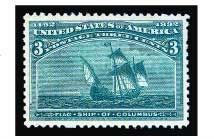
Blind Perforations
Occasionally a perforation pin would be broken or out of line with a female receptacle resulting in a blind, or missing, perforation hole. Blind perforations, like short perforations, are visually distracting. While one would never be mentioned on a written PSE certificate it would be considered as a very minor fault when PSE is in the process of grading a stamp. No doubt many previously blind perforations have been so professionally punched out that is virtually impossible to detect them.
Guidelines on Perforated Stamps
Many of the plates which were used to print pre-1935 U.S. stamps contained vertical or vertical and horizontal guidelines. When the printed sheets were perforated and cut into panes for issuance at post offices the guidelines most often existed at the cut natural straight edges, but for some issues there were perforations along the guideline.
The line pairs of flat plate coil stamps, of course, came from guidelines along a regular perforation line, but such also occurred in some sheet stamps. Examples of sheet stamps which had perforations along guidelines include:
- Vertical perforations along a guideline
Scott Nos. 294-299, 328-330, 523, 524, 547, 571-573, 620, 621, C1-C3, C13-C15, C18, PR114-PR125. - Horizontal perforations along a guideline
Scott Nos. 268-272, 274-278, 280-284, 285-293, 310-313, 323-327, 341, 342, 422, 423, 460, 478-480, 518, 523, 524, 547, 573, 620, 621, C1-C3, C13-C15, C18, E5, E6, J38-J44.
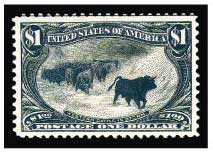
When a single perforated stamp has a guideline prominently showing along an edge (or even worse along two adjacent edges) its eye appeal is degraded and its value is lessened for the vast majority of collectors. Accordingly, PSE considers such to be a naturally occurring "fault" and downgrades the soundness of the stamp, although such would never be mentioned on a written certificate of authenticity. If only traces of a guideline remain on a few perf tips no downgrading occurs.
Two particular situations illustrate the effect of guidelines. In one instance a collector simply couldn't understand why we didn't give a Superb 98 grade to a Scott No. 621. The reason was a prominent, distracting guideline. On another occasion we had a beautifully centered mint Scott No. 277 where the bottom perfs had all been scraped to remove a guideline. In this instance we considered the scraping to be a real fault and the stamp's final grade was even lower than it would have been if the guideline had been allowed to remain.
Early 20th century imperforate stamps commonly were issued in the full printed sheets, so single imperforate stamps sometimes show a guideline on one or two sides. PSE currently grades these stamps as it would if the guideline(s) had been trimmed off.
Scissor Blunted Perforations on Scott No. 167-177 Stamps
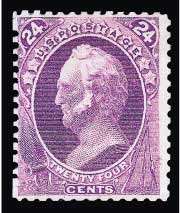
The special printings of the 1873 regular issue stamps were produced in 1875 by the Continental Bank Note Co. The regular issues were available at all post offices, but the special printing stamps could be obtained only through special order to the Third Assistant Postmaster in Washington D.C. As stated in the Scott Specialized Catalog, "although perforated, these stamps were usually cut apart with scissors (before being sent to purchasers). As a result, the perforations are often much mutilated and the design is frequently damaged." Since these special printing stamps were especially prepared for stamp collectors it is surprising that this mutilation occurred just before selling the stamps to the collectors and dealers. Can you imagine the screaming that would occur if such were to happen today?
Unlike for all other stamps, scissor trimmed perforations on this set of stamps would not be mentioned on a PSE certificate; however, they would be considered as faults if a stamp were to be graded. Accordingly, most of the few Scott No. 167-177 stamps would not receive a high grade.
Stamp Faults Which Occur After Issue
Faults which arise as a result of improper handling, improper storage or intentional alteration are usually more serious than any of the various "production faults" which were discussed previously. Improper handling or improper storage may cause tears, creases, thins, stains, toned spots, fading, nibbed perfs or facial scrapes on a stamp.
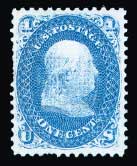
Each of these faults can range from minor to major. For example, a single tear can be a tiny 1mm edge tear, a 3mm long edge tear that protrudes well into the design or a 10mm long tear that seriously affects the stamp's appearance. In turn, the PSE Grading System would consider these tears to be a Fault, a Major Fault, and Damaged, respectively. Similarly, a single thin or a single crease can lead to a soundness determination of Fault, Major Fault, or Damaged depending upon its severity.
Obviously, a combination of faults will downgrade the Soundness of a stamp. Two or three tiny tears are worse than a single tiny tear. One tiny tear and one small thin are worse than either by itself. A stamp that has a large central thin, a 4mm closed tear and a stain in the upper left corner is seriously defective and would be considered as Damaged in the PSE Grading System.
Repair and Reperforation
Equally significant in any soundness determination are the intentional changes done by repair and reperforation "mechanics." Reperforation is done to eliminate a natural straight edge or to improve the centering of a stamp. Repairs are made to improve the appearance of a stamp.
There has long been and there is today a cottage industry of stamp "mechanics" who do this work. Some work on their own stamps, some are employed by an individual or firm, and some offer their services on a freelance basis. Some even have a price list for various kinds of work.
Some reperforation and repair work is relatively crudely done and can be easily detected. At the other extreme, some use sophisticated techniques and are highly skilled. The detection of their work requires careful examination and sometimes even experts will have differing opinions regarding reperforation or certain repairs such as the addition of a perforation tip. In these instances our senior experts may solicit additional opinions, but in the end, they must balance all of the opinions to arrive at a final judgement.
PSE considers reperforation on one side to be a Fault, on two sides to be a Major Fault, and on three or four sides to be Damaged.
Repairs can run the gamut from simply sealing a small tear to patching a hole all the way to adding margins and redrawing parts of the design. A sealed tear is still a tear. A repaired pinhole is considered the same as a pinhole. An added perf tip is considered the same as a pulled perf. A stamp with an extensive repair, such as an added margin, is considered to be Damaged.
Fake, Altered and Counterfeit Stamps
Quite apart from repair or reperforation work, mechanics have created a plethora of outright fake or altered stamps which go beyond the realm of faults - all with the intention of fraudulently extracting money from collectors. Faked or altered stamps are not graded by PSE.
Outright fakes include expensive perforated stamps made by adding fake perforations to cheap proofs or imperforate stamps. Most common are unused 19th century stamps made from cheap proofs, early 20th century coil stamps made from cheap imperforate stamps, and Scott Nos. 461 and 519 stamps made from cheap imperforate stamps.
Another form of fake stamps occurs when the fakers trim the perforations from cheap perforated stamps to make more valuable imperforate stamps. The most common examples are a trimmed Scott No. 304 to make a Scott No. 315 and a trimmed Scott No. 528B to make a Scott No. 534B. Similarly, partially trimmed Washington-Franklin sheet stamps make more valuable Washington-Franklin coils.
Altered stamps include ones with alterations such as:
- Removing a cancel to make a more valuable unused stamp.
- Adding a cancel to make a more valuable used stamp.
- Adding a fake grill to make a more valuable grilled stamp.
- Doctoring (by scraping or painting) the design of a stamp to simulate a more valuable stamp.
- Painting in a guideline on a coil pair to simulate a more valuable coil line pair.
While there are lots of fake and altered U.S. stamps in the marketplace, and while one commonly sees counterfeits of Confederate stamps and U.S. Local stamps, there are very few actual counterfeits of U.S. stamps. Of those that do exist perhaps the only ones that might slip by an expert are the Sperati counterfeits of Scott No. 2 and the New York postmaster provisional, Scott No. 9X1. Counterfeit stamps are not graded by PSE.
| TABLE OF FINAL GRADES | ||
| Numerical | Description | Abbreviation |
| 100 | Gem | Gem |
| 98 | Superb | Superb |
| 95 | Extremely Fine - Superb | XF-Sup |
| 90 | Extremely Fine | XF |
| 85 | Very Fine - Extremely Fine | VF-XF |
| 80 | Very Fine | VF |
| 75 | Fine - Very Fine | F-VF |
| 70 | Fine | F |
| 50 | Very Good | VG |
| 40 | Good - Very Good | G-VG |
| 30 | Good | G |
| 20 | Fair - Good | FR-G |
| 10 | Fair | FR |
| GUM MODIFIERS AND OTHER TERMS | |
| Modifier | Description |
| OGnh | Original gum, never hinged |
| OG | Original gum, hinged |
| DOG | Disturbed original gum |
| POG | Partial original gum |
| NG | No original gum |
| RG | Regummed |
| NGAI | No gum (as originally issued) |
| J | Jumbo - unusually larger margins |
| Mint | Unused or new stamp - never cancelled. |
| Used | A used stamp - cancelled for postage or use. |
